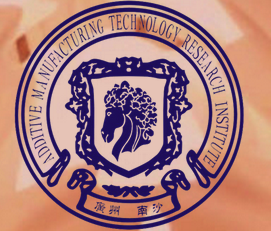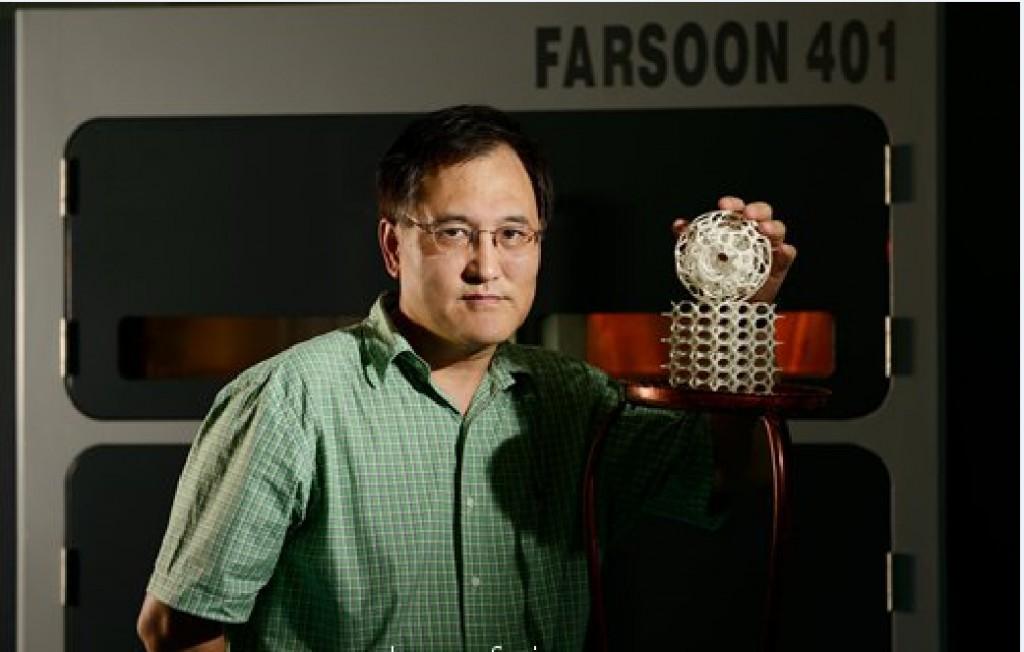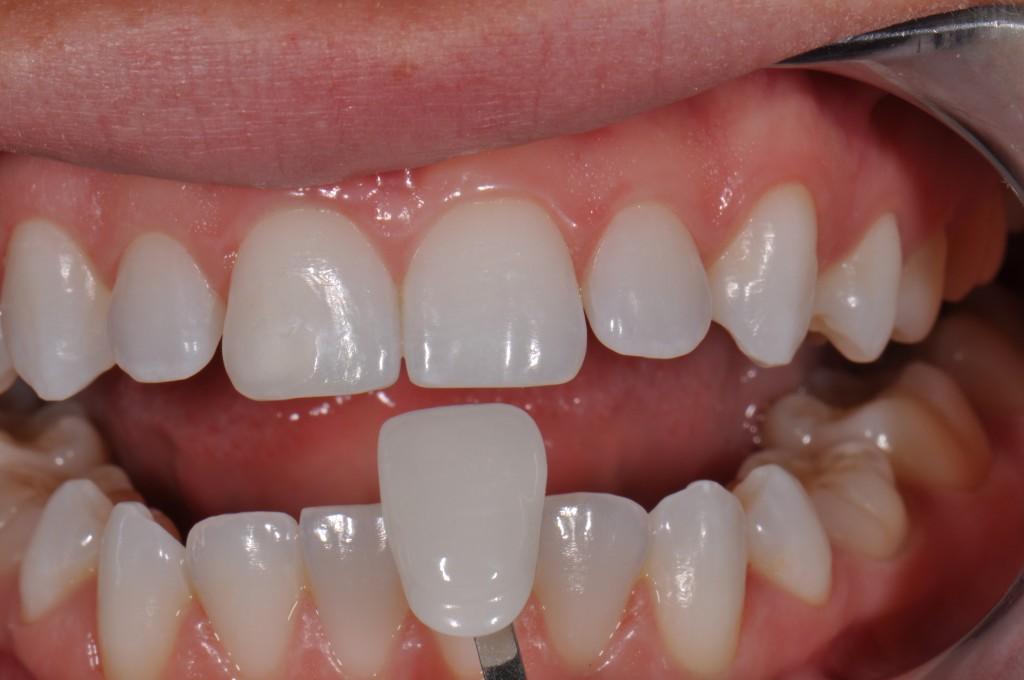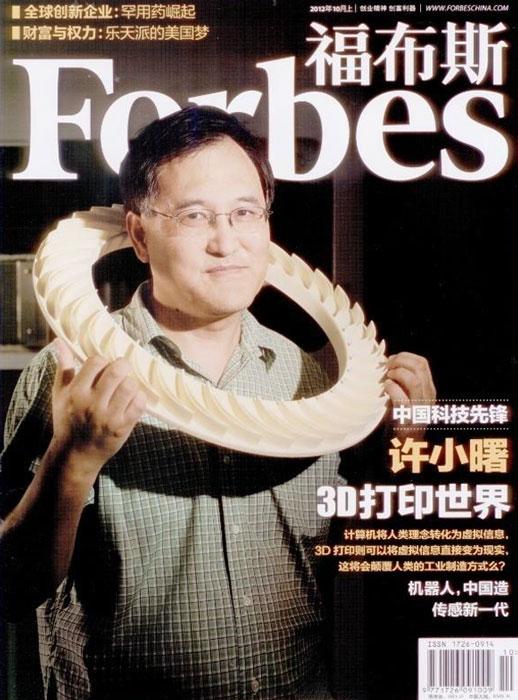 Typically when we think of desktop 3D printers, we either picture an FDM/FFF, extrusion based machine, or an SLA (steterolithographic) machine. Both of these printers have their positive and negatives to them, with SLA having an edge in print resolution, while FDM offers more material options, and larger build volumes. We have seen SLA based 3D printers become quite popular in the dental field, where dentists are able to create molds for patient’s teeth. These molds can then be cast and eventually turned into dentures, bridges, and caps.
Typically when we think of desktop 3D printers, we either picture an FDM/FFF, extrusion based machine, or an SLA (steterolithographic) machine. Both of these printers have their positive and negatives to them, with SLA having an edge in print resolution, while FDM offers more material options, and larger build volumes. We have seen SLA based 3D printers become quite popular in the dental field, where dentists are able to create molds for patient’s teeth. These molds can then be cast and eventually turned into dentures, bridges, and caps.
What if there was a way to actually 3D print these dentures and teeth directly from a 3D printer, without needing to follow up with all of the additional steps? It would certainly save dental technicians a lot of time, and could ultimately mean reduced costs for patients.
Thankfully, one Chinese based research institution, called Guangzhou Nansha 3D Printing Innovation Institute, is working on creating a 3D printer that can do all of the above. The machine, which is designed around SLA technology, uses a laser to cure and harden a liquid photosensitive polymer resin. However, unlike the ultra-thin liquids currently used on SLA 3D printers, researchers at Guangzhou Nansha have devised a way to print materials that have a much higher viscosity (5-6 times thicker than conventional SLA machines). This allows them to 3D print with porcelain to create actual end-use tooth replacements as well as metal filler material, which could be used for fillings or for the creation of dental crowns. They are also experimenting with various biomaterials.
The Director of the Institute, Xu Xiaoshu and his technical team are currently working all of the bugs out of their new 3D printer, which aims to come to market soon. While it uses much of the same technology as current SLA 3D printers, it also borrows a few technical aspects from the more conventional FDM/FFF 3D printers, in that it uses a special extrusion system. This is the system that allows technicians to lay down layers of thick material rather than just materials with a very low viscosity. Using a special high-pressure spray process of extrusion, the machine is capable of printing with a much larger range of materials. While they didn’t reveal the actual process, Xu said that it is much faster than your typical SLA 3D printer, and the machine provides a fairly large 800mm x 400mm build platform.
At the same time, because of the thickness of materials used on this new machine and the process by which it is printed, no support material (or in some cases just very little) is required, meaning less damage to the final prints, and much less work for the technicians involved.
As for speed, Xu says that while conventional SLA 3D printers take approximately 10 seconds for each layer it prints, their machine can do this in just 1/10 of the time, and the entire printing speed is twice that of a typical machine.
Ultimately Xu believes that their new 3D printer will revolutionize the fabrication of porcelain teeth. While the majority of teeth are now fabricated by highly skilled workers who spend a lot of time grinding, cutting, and washing the teeth, this machine will be able to automate almost the entire process, while also reducing the potential for mistakes and the overall costs.
What do think about the idea of one day soon seeing an extrusion based SLA 3D printer come to market that can print in a much larger variety of materials. Discuss in the High Viscosity SLA 3D Printer forum thread on 3DPB.com.
Subscribe to Our Email Newsletter
Stay up-to-date on all the latest news from the 3D printing industry and receive information and offers from third party vendors.
You May Also Like
Human Remains Could Be Identified with the Help of Forensic 3D Printing
I’m still in awe at what additive technologies can accomplish, from creating alternative meats, automotive parts, shoe insoles, and surgical models, to giving faces to the lost. That is to...
3D Printing News Briefs, May 17, 2023: Stress-Resistant Alloy, 3D Printed Trophies, & More
In today’s 3D Printing News Briefs, we’re starting off with a little research, as materials scientists developed a 3D printing process that produces an extremely stress-resistant alloy. Moving on to...
On the Ground with COBOD Construction 3D Printing at Ohio State
This winter, The Ohio State University’s Center for Design and Manufacturing Excellence (CDME), which is one of the country’s largest additive research groups, received a COBOD BOD2 3D construction printer...
3D Printing Webinar & Event Roundup: April 2, 2023
You can breathe easy this week, because it will be much less hectic than last week, at least in terms of 3D printing webinars and events to attend! There will...


































